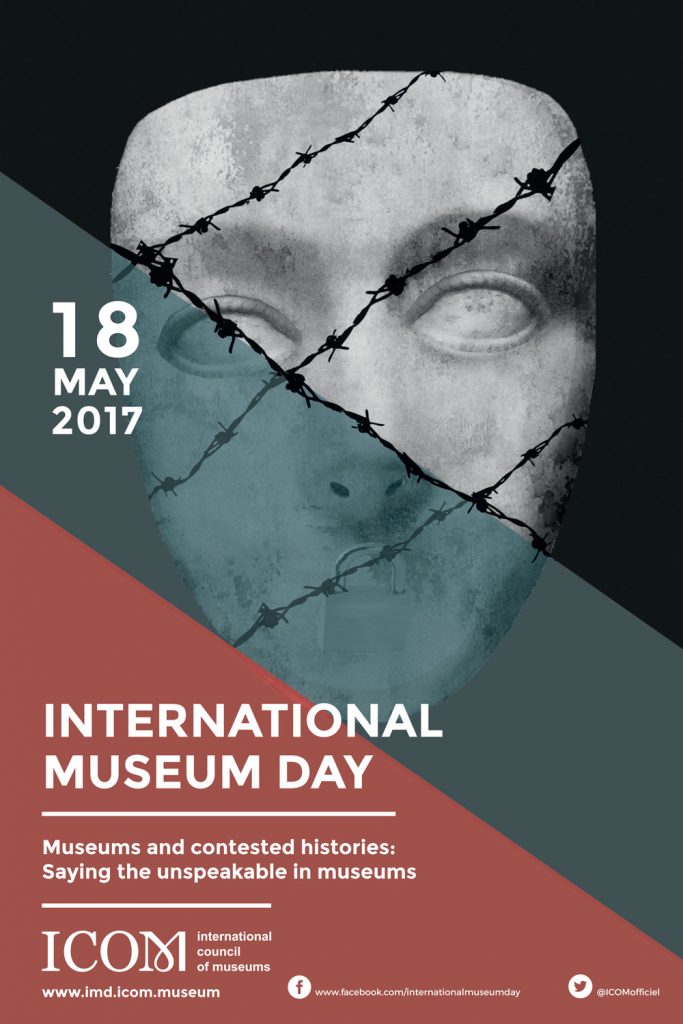Sharing some of Canada’s more difficult stories
Since 1977, International Museum Day ─ May 18 ─ has celebrated museums as important sites of cultural exchange, enrichment and understanding. The Canadian Museum of History is a proud member of this worldwide community. The theme this year, Museums and contested histories: Saying the unspeakable in museums, encourages museums to play an active role in peacefully addressing traumatic histories through mediation and multiple points of view.
This subject is especially relevant for us as we prepare for the July 1 opening of the Canadian History Hall, our new, signature exhibition. The Hall’s mandate is to offer a comprehensive look at Canada’s history, from the dawn of human habitation to the present day, which means telling this country’s many stories, including difficult ones.
As Director of Creative Development and Learning for the Canadian History Hall, Lisa Leblanc determines the most effective ways of sharing the Museum’s stories, research and collections with visitors. She admits that the new Hall’s mandate is challenging.
The Hall presents 15,000 years of history within 40,000 square feet. And although it would obviously be impossible to explore every facet of Canada’s history, it was important for the team that this country’s story be told from as many perspectives as possible — a sentiment that was echoed across the country during consultations with advisory committees and the general public. The resounding message was that Canadians wanted more than one perspective on our history; specifically, they wanted to see both the good and the bad represented in the new Hall.
Telling a complete story means looking at history from many angles, from perspectives of community and national pride to critical vantages. For example, as Leblanc points out, you can’t tell the story of the transcontinental railroad without talking about the displacement of Indigenous peoples or the impact it had on Chinese workers.
Once Leblanc and the Canadian History Hall team had further determined what Canadians wanted to see, their job was to determine how to present those topics. For example, the new Hall will include a section on Indian residential schools: a horrific chapter in Canada’s history that required careful handling. The Hall also addresses post-contact wars and disease, as well as struggles for acceptance and recognition, such as the continuing story of Canada’s LGBTQ community and the recent arrival of Syrian refugees. As Leblanc notes, visitors arrive at the Museum with unique personal histories and varying degrees of comfort or tolerance for difficult subject matter. The team’s challenge was to present these chapters in a manner that is sensitive to visitors without obscuring the history.
For one thing, the team made sure that presentations were honest, clear and open, but without being intentionally shocking or disturbing. As Leblanc explains, “There is always a sense of calibration. You don’t want to be sensational, but you don’t want to be reticent, either.” Also important was providing visitors with places for quiet reflection — particularly around difficult material. These special areas will allow visitors to take a moment to collect their thoughts, or to gather and talk quietly after engaging with the material. With regard to disturbing video footage, advisories will be posted informing visitors of the type of content, allowing them to make their own viewing decisions.
Ultimately, Leblanc says, “museums are keepers of evidence. We put the content out there for people to see in all its complexity, and we provide a safe place for people to have conversations about that evidence.” In other words, it is the Museum’s job to say, “Here are the different voices, perspectives and experiences,” then leave it up to visitors to consider that information. Her hope is that the material sparks conversation and new ways of considering the past.
This year’s theme for International Museum Day was chosen to highlight that the acceptance of contested history is the first step toward reconciliation. Far beyond being a single year’s theme, this is a constant driving force behind museum work the world over, and it is certainly a guiding principle for the new Canadian History Hall.
